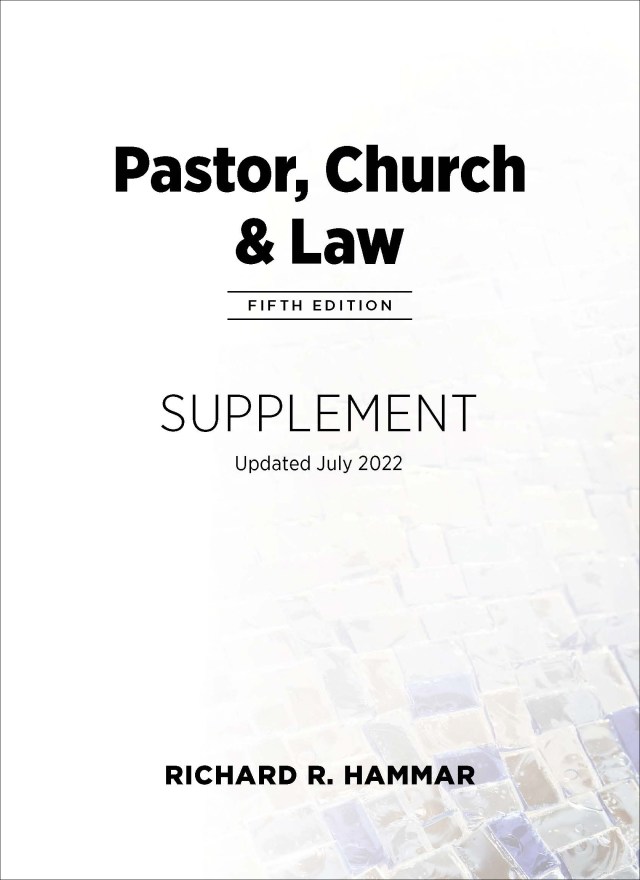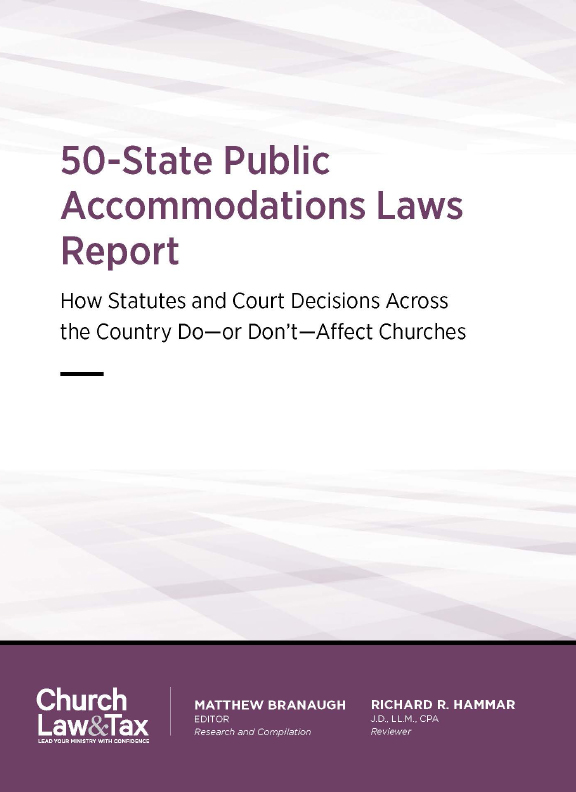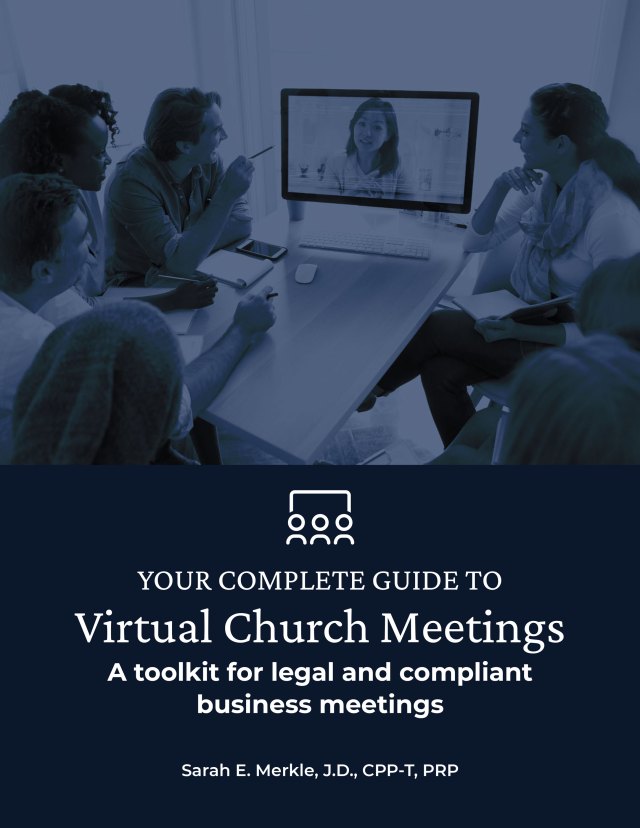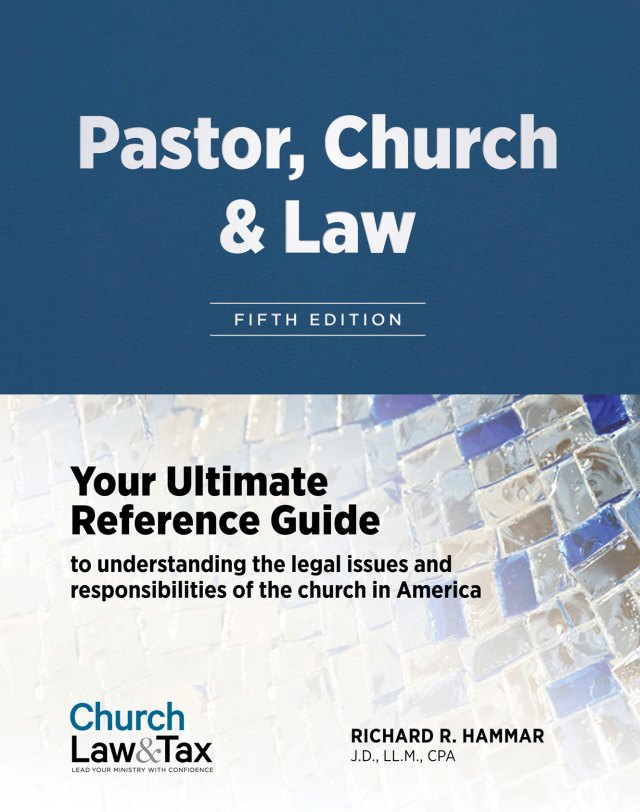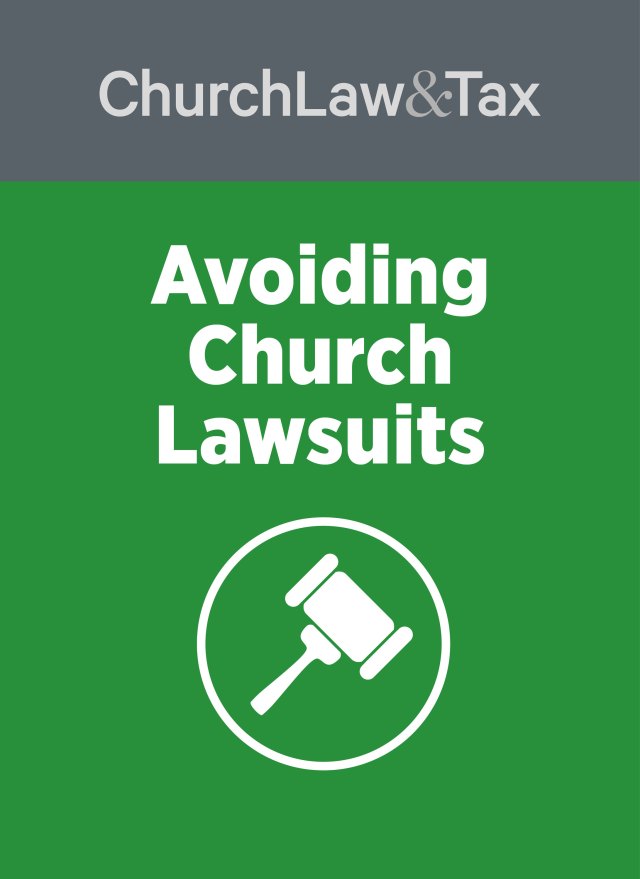• Key point. A church may be responsible for injuries sustained by a volunteer worker resulting from use of a defective church—owned ladder.
A Michigan court ruled that a church could be sued by the estate of an individual who was killed as a result of a defective ladder while performing work on church property. The decedent was engaged in performing repair and maintenance of a church building when he fell from a church—owned ladder and was killed. His estate sued the church, claiming that its negligence was the cause of the decedent’s death. The court concluded that the decedent was an “invitee” on the church’s premises. It defined an invitee as “a person who enters the land of another on an invitation that carries with it an implication that reasonable care has been used to prepare the premises and make them safe.” The court noted that
EXT an invitor must warn of hidden defects; there is no duty to warn of open and obvious dangers unless the [property owner] anticipates harm to the invitee despite the invitee’s knowledge of the defect. Whether a danger is open and obvious depends upon whether it is reasonable to expect an average user with ordinary intelligence to discover the danger upon casual inspection. The care required extends to instrumentalities on the premises that the invitee uses at the invitation of the premises owner.
The court concluded that “an extension ladder is an essentially uncomplicated instrument which gains a propensity for danger only because it will allow the user to reach great heights. This danger is most obvious to all but children of tender years ….” As a result, a church cannot be legally responsible for injuries suffered by workers who are injured when they fall from a ladder. However, the court cautioned that this rule did not necessarily apply in this case, since the estate of the decedent claimed that the decedent’s fall was caused not by the general nature of the ladder itself but rather by a missing or malfunctioning safety latch. The court observed: “The real inquiry is whether this defect must be deemed an open and obvious danger. We think not. The danger that an extension ladder might slip and telescope down because of inadequate bracing at its base … is a danger readily apparent to persons of ordinary intelligence and experience. However, the fact that a safety latch is missing or malfunctioning creates a different, or at least an additional, danger that is not so obvious absent specific knowledge of the defect.”
In summary, the church could be legally responsible for the worker’s death if the cause of death was a fall from a ladder that contained a missing or malfunctioning safety latch. This conclusion illustrates the risk churches face when allowing others to perform work on their premises using church—owned equipment. Churches should not permit persons to use ladders, electric tools, and other potentially hazardous equipment, without a thorough safety inspection. Eason v. Coggins Memorial Christian Church, 532 N.W.2d 882 (Mich. App. 1995). [ Premises Liability]
• Tip. Churches should not permit persons to use ladders, electric tools, and other potentially hazardous equipment, without a thorough safety inspection. Failure to do so may result in liability for injuries that occur because of a safety defect in the equipment.
© Copyright 1996, 1998 by Church Law & Tax Report. All rights reserved. This publication is designed to provide accurate and authoritative information in regard to the subject matter covered. It is provided with the understanding that the publisher is not engaged in rendering legal, accounting, or other professional service. If legal advice or other expert assistance is required, the services of a competent professional person should be sought. Church Law & Tax Report, PO Box 1098, Matthews, NC 28106. Reference Code: m58 m86 c0396
